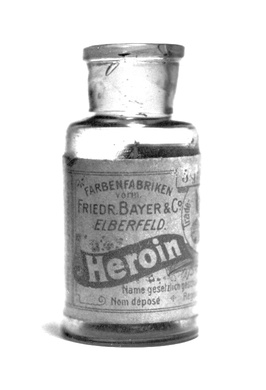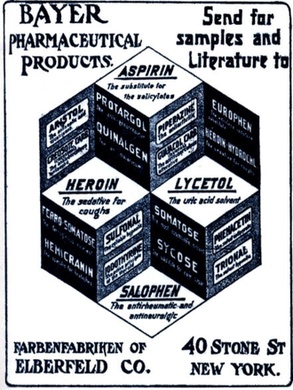
Bayer, a German pharmaceutical company, introduced diacetylmorphine under the trade name Heroin (from the Greek word for hero) as a remedy for cough. According to Bayer, diacetylmorphine was more effective than morphine or codeine at suppressing coughs and was a "non-addictive morphine substitute."
Both of these claims later turned out to be false. By 1911, earlier claims about its action on the lungs were challenged, and it was regarded as about as effective as codeine in relieving cough. About the same time, stories of its addictive potential were beginning to accumulate. At the doses used for cough suppression, very few patients were likely to become addicted, and, since it was mostly used for cases of chronic lung disease, likely few patients attempted to withdraw. But because it was unregulated and available over-the-counter, many people (in particular young working class Americans) sniffed, smoked, swallowed, or injected it to get high.
Diacetylmorphine had not been discovered by the Bayer researchers. It was first synthesized in 1874 by C. R. Alder Wright, an English chemist by boiling morphine in acid. This process altered the molecule and produced a semi-synthetic morphine derivative. Initial animal trials were not promising and little attention was given to its potential therapeutic uses at the time.
Source: Sneader, W. (1998). The discovery of heroin. The Lancet 352, 1697-1699.
| Drugs: | Opium (morphine, heroin, opioids) |
|---|---|
| Regions: | Germany, USA (United States of America) |
| Topics: | Cultivation, production and trade, Medicinal use of drugs |

